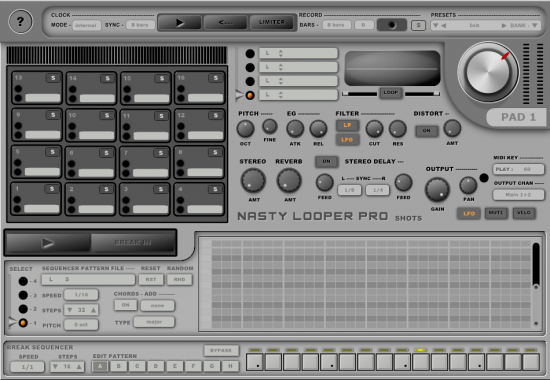传统的日本乐器 – Icebreaker Audio Akebono Collection KONTAKT-ohsie
 ohsie | 4 June 2024 | 444 MB
ohsie | 4 June 2024 | 444 MB
akakebono(直译:“黎明”)Koto Synth可能是在20世纪80年代中期的某个时候发布的。英文的详细资料很少,因为它从来没有打算供西方音乐家使用。它重新创建了一些传统的日本乐器的声音使用样品和数字合成的组合。Akebono主要被设计为一种琴琴练习乐器,它使用按钮而不是钢琴键,有一个调节音高和音量的操纵杆,还有一个内置在行李箱中的扬声器。
包括什么?
15种乐器,包括弹拨乐器,打击乐器和管乐器
弹拨和风都使用键开关来模仿原始硬件上的发音按钮
打击乐映射,模仿原来的硬件,使它更容易演奏重复的模式在同一鼓
4种不同的效果:磁带,EQ, Mod(合唱)和回声
选择单声道或多音模式
7个麦克风位置的扬声器使用罕见的thurresson CM402和直接线出样品。你可以选择直接,免提或两者混合
Kontakt 6.4.2或更高版本
脉冲响应
为了完全重现这种独特乐器的真实声音,在各种麦克风位置和配置下记录了扬声器的几个脉冲响应。录音使用了稀有的Thuresson CM402麦克风,在定制设计的Kontakt界面中,共有7种麦克风配置/位置可供选择。仪器样品是从直线记录出来的。您可以选择使用直接信号,扬声器信号,或两者的混合。
The Akebono (literal translation: “Dawn”) Koto Synth was probably released sometime in the mid-1980s. Detailed information in English is scarce, as it was never intended for use by western musicians. It re-creates a number of traditional Japanese instrument sounds using a combination of samples and digital synthesis. Designed primarily as a Koto practice instrument, Akebono uses buttons instead of piano keys, has a joystick for pitch and volume modulation, and a speaker built into the suitcase.
What’s Included?
15 instruments that include plucked, percussive and wind
Plucked and wind both use keyswitches to mimic the articulation buttons on the original hardware
Percussion mapping which mimics the original hardware and makes it easier to play repeating patterns on the same drum
4 different effects: Tape, EQ, Mod (chorus) and Echo
Choose either mono or poly voice modes
7 mic positions of the speaker using a rare Thuresson CM402 and direct line out samples. You can choose direct, speaker or a mix of both
Kontakt 6.4.2 or higher
Impulse Responses
In order to fully recreate the authentic sound of this unique instrument, several impulse responses of the speaker were recorded at a variety of microphone positions and configurations. A rare Thuresson CM402 microphone was used for the recordings, and a total of 7 microphone configurations/positions are available in the custom designed Kontakt interface. The instrument samples were recorded from a direct line out. You can opt to use the direct signal, the speaker signal, or a mix of both.




